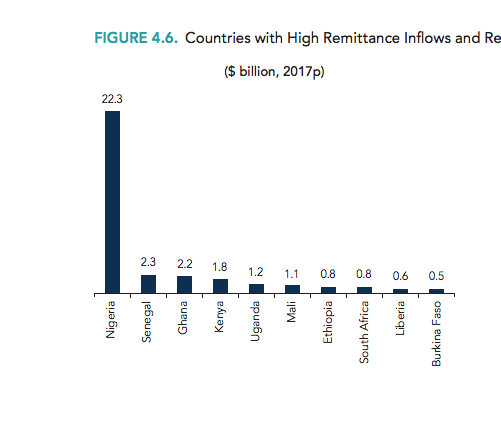According to a recent report by World Bank, formal remittance inflows to the Sub-Saharan Africa region in 2017 increased by 10 percent from about $34 billion in 2016. This is partly because of improvement in economic activities in the high-income Organisation for Economic Co-operation and Development (OECD) countries that are the major remittance-sending countries for Sub-Saharan Africa.
In Sub Saharan Africa, Nigeria, with projected remittances of $22.3 billion in 2017 would continue to be the largest remittance recipient in the region. It is experiencing a recovery in oil production with an increase in oil output during the recent months leading to improved confidence for investment-oriented remittances.
Remittance costs: Sub-Saharan Africa has always recorded the highest remittance costs in the world. Recent months have seen a moderate decline in remittance costs from 9.4 percent in 2017 Q2 to 9.1 percent in 2017 Q3, compared to global averages of 7.3 percent and 7.2 percent respectively. In comparison, these costs are almost the double of those in South Asia (5.4 percent) and are still very far from the SDGs’ goal of achieving less than 3 percent by 2030.
But remittance costs are heterogeneous across remittance corridors. Remittances sent from the United Arab Emirates to Sudan or South Sudan tend to have the lowest costs. On the other hand, intraregional corridors originating in Nigeria, Angola and South Africa are among the most expensive.




